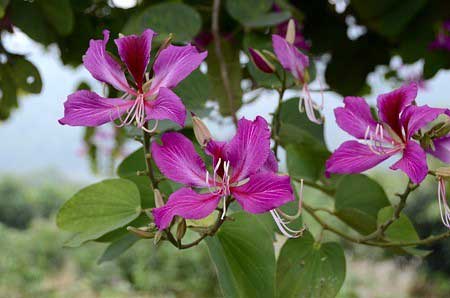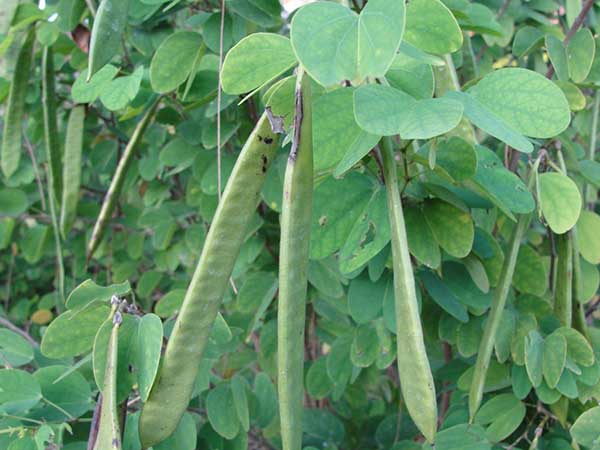Family Fabaceae – Caesalpinioideae (Purple Bauhinia, Orchid or Butterfly Tree).
There are four native Bauhinia species in Zimbabwe, but although you see this one in many gardens in Harare, it is not an indigenous species. Bauhinia purpurea is a tropical and subtropical plant, native to East and South-East Asia, usually growing where the rainfall is between 800 and 5000mm, at altitudes of between 500 and 3000m and where the mean annual temperature is between 12 and 21oC.
The tree is naturally found in most types of vegetation and on various soils – sandy, loamy or gravelly. The growth rate is relatively good at lower altitudes but slows down above 1600m. It demands plenty of light and requires good drainage. Severe frost kills the leaves of seedlings and saplings, but they recover during summer. Once established, this species is frost-hardy, but is the least drought-hardy compared to other Bauhinia species.
It is widely planted as an ornamental tree in parks, gardens and homesteads and along avenues for its showy fragrant, purple flowers. However, the weak wood of the branches may break during storms and it has been found to be weedy in wetter areas. Interestingly, the tree flowers best on drier soils.

The generic name (Bauhinia) commemorates the Bauhin brothers Jean (1541-1613) and Gaspard (1560-1624), Swiss botanists. The two lobes of the leaf exemplify the two brothers. There are about 300 species of the genus Bauhinia found in tropical regions, which are frequently planted for their showy flowers and ornamental foliage.

B. purpurea is a small to medium-sized deciduous fast-growing shrub or tree with a round, symmetrical, moderately dense crown to 10m tall, young branches becoming glabrous (hairless) or nearly so (glabrescent). In dry areas the size is much smaller. The bark is pale grey brown, fairly smooth to slightly fissured and scaly. In its natural habitat the tree is deciduous, flowering from September to November when the plant is leafless. The tree starts flowering at two to three years old.
The leaves are simple and alternate, and can grow up to 12 x 12cm. The flowers are numerous, purple to nearly white, or purple-marked, velvety, and three to four cm long. The flowers are followed by long, slender, brown, flat, seed pods. Unusually, stomata are found on the seeds and pods.
The young leaves and flowers of various Bauhinia species are eaten in Asia as a side dish with rice, or used to flavour meat and fish. The leaves make good animal fodder and are greedily eaten by sheep, goats and cattle, with a protein content estimated at 12.6%. In an experiment in Nepal, B. purpurea was found to increase milk production by lactating buffaloes. The bark of Bauhinia is used to make rope and contains considerable amounts of tannin, which in the past was widely used in the leather industry. The medicinal uses of the bark can be largely attributed to the presence of these tannins – poulticing to reduce swelling and bruises and to ripen ulcerations and boils. In India, the bark is extensively used for glandular diseases and as a poison antidote, while the leaves are administered as a cough medicine. The flowers are said to be laxative and are used in curries and pickles, while the tree yields an edible gum. The wood is used both as fuel and for agricultural implements. B. purpurea, with its deep root system and high root to shoot ratio, is a suitable species for slope stabilisation. The tree coppices well and can stand heavy lopping.
Reference:
Orwa, C., Mutua, A., Kindt, R., Jamnadass, R., Anthony, S., 2009. Agroforestree Database: a tree reference and selection guide version 4.0. World Agroforestry Centre, Kenya.
